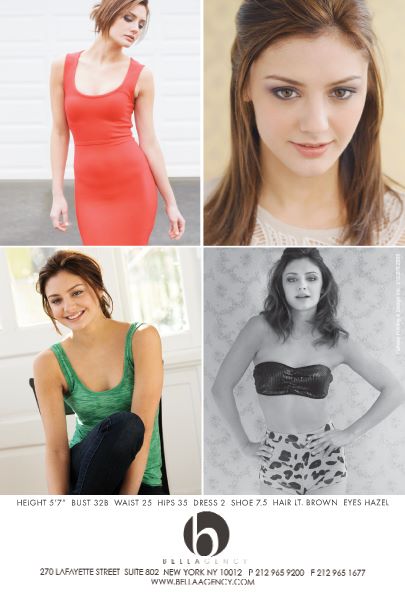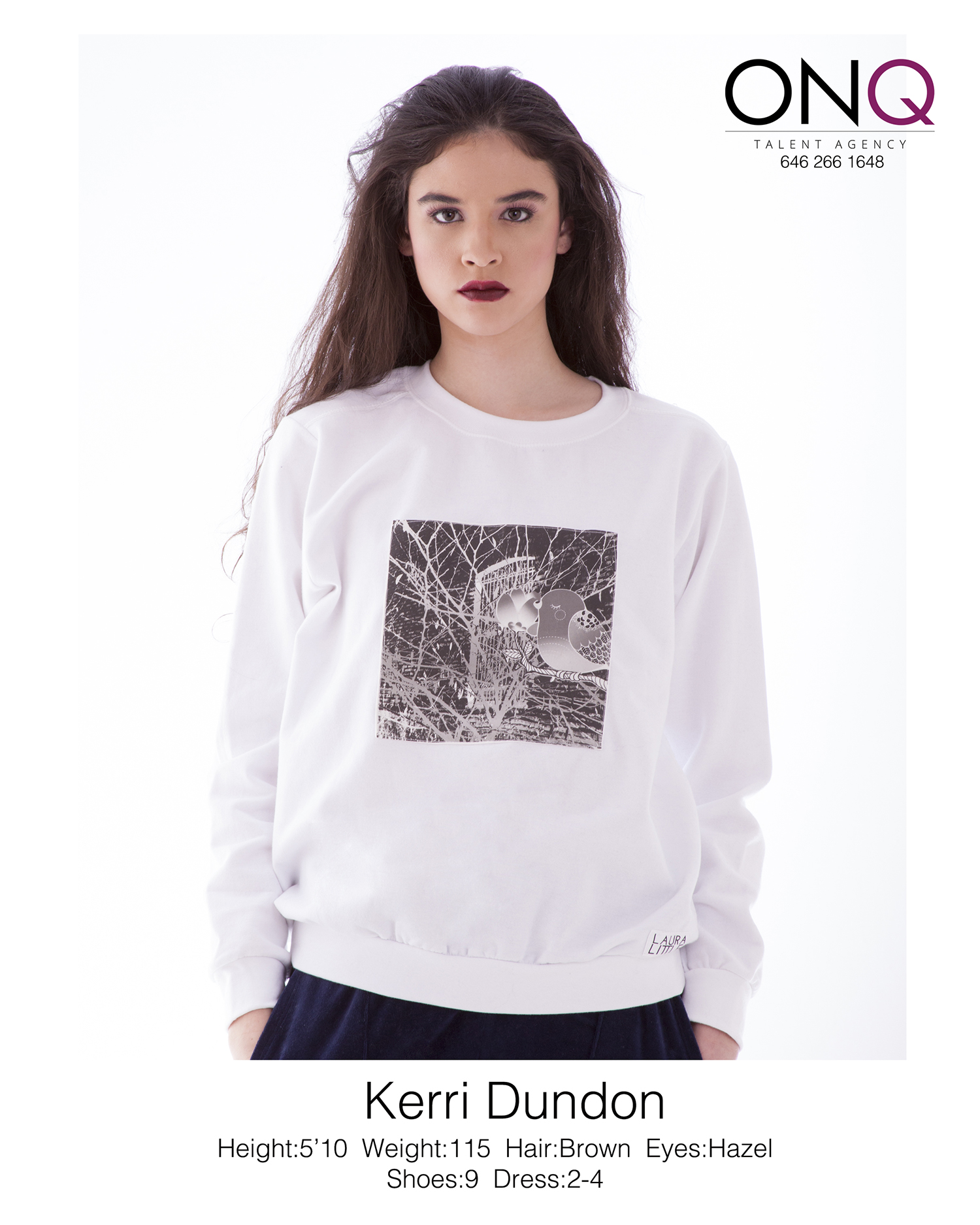Letterhead Design Tips
Use of customized letterhead is a great way to lend credibility to your business while reinforcing your brand identity. While much of our communication is now digital, a written or printed letter on letterhead will make an impression and show your clients or customers that you value their business. It’s a standard component of most corporate identity packages and in the business world, it’s often expected.
What is letterhead?
A letterhead is the heading at the top of a sheet of letter paper. It usually consists of a name, contact information, a logo or corporate design. The term “letterhead” is also often used to refer to the whole sheet of paper imprinted with that heading.
1. Keep it simple.
Your letterhead should support and showcase your content, not compete with it. It should frame the content of the letter without being too distracting.
Use a clean design: make use of white space, and don’t crowd the elements of your design. Prioritize your information — decide what’s essential. Keep your fonts to a minimum, and stick to one or two accent colors.
2. Create a visual hierarchy.
List your most critical information first. You can guide the eye by creating contrast with font size, styles and color, but don’t go overboard — too much style variation can get distracting. The most important thing is that your name and contact information are easy to read and find.
3. Pay attention to size.
Don’t make it so big that it’s distracting. However, you also don’t want your company and contact information to go unnoticed. Find the proper balance.
Keep your font size no smaller than 9 pts. Make sure it’s readable.
4. Consider visuals.
In addition to a logo, some companies include patterns or graphics as part of their letterpress. If your logo uses geometric shapes, you can try using some of these elements to create a pattern. Try to create a design that’s minimal and subtle.
To incorporate visuals to your design without using too much space, consider using a watermark.
5. Use quality paper.
Print your letterhead on quality paper stock with a professional feel. You may also want to consider special finishing options such as embossing, foil stamping or a full-bleed design.
Brochure Design Tips
A well-designed brochure can be a highly effective marketing tool. Brochures allow you to communicate a lot of information in a small printed piece that's easy for potential clients to carry with them. Here are some tips for making the most of that space:
1. Emphasize your call to action.
Have a specific goal in mind from the beginning, and let that be the guide for your content and design choices. Do you want people to visit your website? Call you? Visit your location? While you might think these things are implied, your call-to-action should be spelled out and emphasized.
This company's goal is to get people to contact them. Their call to action is emphasized on the back panel.
2. Sketch and fold your design.
Take a piece of paper, fold it into thirds and start sketching out your content. This step is helpful in planning how you will organize the different components of your brochure, as it allows you to visualize the order in which your content will be read.
- The front panel should invite your reader to open the brochure.
- The inner front panel will usually include small amounts of information that further interests the reader, such as customer benefits or a summary of your services.
- Keep in mind that the far right inside panel will be the last to be read and is sometimes overlooked, so avoid placing critical information here.
- The back panel is typically reserved for your location, contact information, website and social links.
This brochure follows the format described above. The front panel has a bold image and text that invite the reader to open the brochure; the inner front panel includes a summary and brief list to further interest the reader to learn more about Marcus' photography; and the back panel includes a location and contact information, as well as a call to action ("RSVP").
3. Include visuals.
Create a visually appealing brochure by including relevant photos and artwork where applicable. Pictures will help draw attention and break up blocks of text, making it easier for your brochure to scan.
You should also use charts and graphs to summarize your data whenever possible (people are more likely to remember information this way). You can use simple charts or graphs to compare your different products or services, or to compare your company’s benefits to those of your competitors. You might also use pie charts, visual timelines, etc.
The graphics in this brochure help break up the text and make it easy to scan — each gives an idea of what the section is about.
4. Keep it concise.
Use your space wisely, and avoid cramming in too much information. Your brochure should be easy and enjoyable to read, and also possible to scan.
With limited space, it’s not necessary to list your company’s history and all your achievements — you only need the basic details. Instead, focus on the reader, and your company’s benefits. How will the reader benefit from your product or services?
All of your content should be designed to spark interest and support your call-to-action.
This brochure clearly and concisely states the company's benefits.
How to Combine Fonts
Finding the right font can be a challenge in and of itself. Then there’s the challenge of finding another font or two that look nice with it. While there aren’t precise rules for combining fonts together, here are some best practices that can help you get started:
1. Create contrast.
Contrast between your fonts will highlight the different roles that your fonts are playing, as well as draw attention to important pieces of information. Furthermore, contrasting fonts tend to look nice together.
You can achieve contrast through differences in size, style and weight, or by pairing a sans-serif font with a serif font. Sans-serif/serif font pairings tend to work well together — it’s a popular, easy choice among designers.
2. Find a couple of shared characteristics.
While you do want contrast, you’ll also want to be sure that your fonts have a sense of harmony. Finding fonts with a couple shared characteristics will help you achieve this. For example, try combining fonts with similar x-heights, proportions or spacing.
PT Serif and PT Sans have similar x-heights. Fonts from the same family / creator typically have shared characteristics and pair well together.
3. Avoid pairing fonts that are too similar.
As you’re looking for shared characteristics between fonts, remember not to lose your sense of contrast. Your font choices should be distinct — it should be obvious that they are two different fonts, and that your choices were deliberate. Too many similarities may create confusion and discord.
There is not enough contrast between these fonts.
4. Pair complementary fonts.
Fonts have personalities: bold, light, playful, conservative, elegant, etc. If you’re using a bold font, for example, in your headings, try pairing it with an opposite, complementary body font — something more neutral.
5. Limit your number of fonts.
Best “font pairing” practices generally say to stick to 2-3 fonts. You can establish a visual hierarchy by assigning certain fonts to headings, subheadings, excepts and body text.
In general, you won't need more than three fonts (as used above).
How to Create a Brand Style Guide
A style guide is a reference sheet that defines the visual aspects of your brand, such as your logo, fonts and colors. It’s an essential tool for maintaining consistency throughout all of your branding materials, and is particularly helpful if you’re working with an outside designer or printer, or have multiple people creating new things for your brand. It can also help save time, so you’re never scrambling to find a new font or color to use.
Style guides (also referred to as "brand bibles") can get really in-depth and cover everything from your mission to your target audience, values and brand personality. Below we've outlined some of the more basic, visual design-related to include.
1. Your logo
Consider all the ways it might look in different places, and include multiple versions if necessary. For example, you might have different versions for your website homepage, business cards, letterheads, etc. You should also include any alternate color options you have (reversed, black and white, etc.).
WhatsApp offers several options of their logo to use for various layouts and occasions. (View the rest of their brand guidelines here.)
Specify the minimum size your logo should be displayed at, and whether it should be surrounded at a certain amount of empty space.
2. Your colors
This will typically be the colors from your logo, as well as a few complementary colors. This section should include HEX codes for web use, and CMYK values and Pantone colors for print. Conversions from RGB colors (using HEX codes) to CMYK can be dramatic sometimes, so be sure to test all of your colors. (Learn more about the differences between RGB, CMYK and Pantone colors.)
Coolors is a great, easy source for generating color schemes. You may also want to try Adobe Kuler and Paletton.
3. Your fonts
Specify which fonts go where — such as which fonts will be used for headings, subheadings, body text, etc. You can also specify sizes, weights, styles, etc.
from Mailchimp's style guide
4. imagery
Include any graphic or web elements and icons you might use. You might also want to describe what style of photography should be used, and if there are any visual elements that should be avoided.
Skype's style guide includes its own illustrations
14 Tips for Effective Poster Design
Posters are a great opportunity to draw attention, spread your message, and get creative. See below for some tips on getting the most mileage out of this effective marketing tool.
FONT
1. Keep it simple. Stick to one or two fonts to avoid clutter.
2. If you're using more than one font, try playing with contrast to draw attention — by using script next to a bold sans serif headline, for example.
3. Make sure your text is easy to read from a distance.
4. Match your font with your message: is it serious, playful, traditional, or modern?
Get more tips for choosing a font here.
IMAGE
5. Start with a single, dominant image to build your poster design around.
6. Be sure to use high-quality images for large posters, at least 300DPI.
MESSAGE
7. Less is more. Decide which elements are necessary and stick with those.
8. Include a call to action.
9. Establish a hierarchy of information with a headline, details, and fine print if necessary.
Composition
10. The eye is drawn to the center. You may want to consider placing your most important text here, or you can center your image and place the text in the header and footer.
11. Because the poster may be viewed from a distance, try using space between its elements.
Color
12. Create a mood and match your color to your message.
13. Draw attention with a colorful palette, or by focusing on just one or two hues.
Location
14. Consider where your poster will be located. This will affect your size, message, and even color (you don’t want it to blend into the environment).
7 Tips for Choosing a Font
The fonts you choose for your business cards, website, brochures, and other branding materials is important. The right font will elevate your message, while a poor font choice may lessen your credibility. Some are universally liked, and others are disliked by most. It’s not just about likability, though — there are other factors to keep in mind. Consider the points below.
1. What’s your brand personality? Is it serious, playful, traditional, or modern? Let your typeface (and all other components of your design) reflect the image you’re trying to convey.
2. Where will the text be displayed? Many fonts are not one-size-fits-all. Display typefaces are meant to be used in large formats. Text or body fonts are designed for use in large areas of copy.
3. Display faces should be used sparingly — in headlines, or occasionally to draw attention.
4. Try to stick with two fonts, or three at most. And don’t be afraid to use a single one for your entire brand.
5. If you’re only using one or two fonts, you’ll want them to be versatile. See how they look in different sizes, in bold, italic, capitals, lowercase, etc. Some are more versatile than others.
6. If you’re using more than one font, make sure they pair well together. You can do this by using fonts in the same family or by the same designer (for example, Merriweather and Merriweather Sans). It can also be helpful to find a shared quality, such as letter height or width. Experiment until you find the right match.
7. Don’t overcomplicate things. If you’re using more than one font, there should be a reason for it. Smashing Magazine explains: “If we reach a point where we want to add a second face to the mix, it’s always good to observe this simple rule: keep it exactly the same, or change it a lot — avoid wimpy, incremental variations.”
Still need help with design for your business cards or other branding materials? Contact us.
Designing Your Comp Card
Comp cards are the business cards of models and actors. They display a headshot on the front with an additional 3-5 images on back, along with the individual’s stats. They’re handed out to potential clients and agencies during auditions and castings, and they’re also used by agencies to market their models. “Comp card” is short for composite card, and it may also be referred to as a Sed Card, Zed Card, or Z Card (they all mean the same thing).
What you should know:
- Cards are typically 5.5” x 8.5”.
- They should be printed on quality, heavy cardstock.
Front of card:
- Show off your best headshot. To allow agents and potential clients to consider you for a variety of jobs, this headshot should ideally display a versatile, more “natural” look.
- Include your name, printed in a simple, easy-to-use font, such as Arial or Times New Roman, in size 12 or 14.
Back of card:
- Include three to five images that show variety. Ideally, they will convey your experience, range, and the type of work you’re seeking. If you’re a model, you’ll want to include a variety of looks. Actors may show different types of lifestyle shots, especially if they’re looking for commercial work.
- Most women include these stats: hair color, eye color, bust, waist, hips, dress size, and shoe size.
- Men typically include: hair color, eye color, height, suit or chest size, was it, inseam, and shoe size.
- Provide contact information: your cell phone number, email address, and possibly your website. Again, use a simple font, size 12-14.
- You may also display your agency's logo.
- The card may be vertical or horizontal.
These cards are your first impression, and a great marketing tool. Be sure to convey your professionalism with high-quality photos, a clean design, and quality printing production.
If you have any more questions about design, or you need comp cards printed, contact us. You can check out our pricing for card prints here.
7 Tips for Designing Your Business Card
Business cards are an opportunity to lend credibility. It might be the first item people receive from you, and you have a quick chance to make a good impression. We’ve put together some tips for an effective design. (Keep in mind that these are only suggestions, not hard rules.)
1. KEEP IT CLEAN AND CLUTTER-FREE.
Simple is better. Don’t be afraid to make use of white space. Important information should be easy to spot at a quick glance. Someone should immediately be able to find out whose card it as and what company it’s for.
2. KEEP IT READABLE.
Choose fonts and colors that are easy to read. Don’t make the text too small. It should be at least 8 pt. — anything smaller may look fine on your monitor, but it can appear fuzzy when printed.
3. BE THOUGHTFUL ABOUT WHAT INFORMATION TO INCLUDE.
Again, you don’t want clutter. Generally, the most important things to include are: your name, your job title, company name, phone number, and email. If you have room, include your website. Physical addresses are less important on cards these days so if you’re short on space, don’t worry about leaving this out.
Use the front of your card for your most important information. The back of the card can be an opportunity for extra branding — a statement, tagline, image, etc. Don’t include any messages that might be temporary.
4. THINK ABOUT COLOR.
Bold, bright colors can help you stand out. You also can’t go wrong with a black and white for a striking, professional look.
If you need help choosing colors, COLOURlovers.com is a helpful source where people can create palettes and users vote on them.
5. CONSIDER YOUR CARD'S PRACTICALITY.
The standard business card size 3.5”x2” (55x85mm). Some people like to use a different size to stand out. Keep in mind that if you choose to do this, your card won’t fit in standard holders.
6. BE CONSISTENT.
Try to choose a design that matches your website and other marketing materials (just make sure the fonts and colors are readable). Let it reflect your brand identity.
7. THINK OF YOUR BUSINESS CARD AS A MARKETING TOOL.
In addition to being a tool for distributing your contact information, it can also be a marketing opportunity. Think about what your goals are. Do you want to stand out? Try thick cardstock, a unique design, and unexpected colors. Or you can use a sleek, minimalistic design that conveys your professionalism.
Still not sure where to start? If you need help with your design, let us know.
-
May 2023
- May 14, 2023 Branded Collateral, what you should know. May 14, 2023
-
July 2020
- Jul 14, 2020 Getting back to business After Covid-19 Jul 14, 2020
-
March 2017
- Mar 8, 2017 Postcard Marketing Ideas Mar 8, 2017
-
February 2017
- Feb 22, 2017 Actor Headshots: What You Should Know Feb 22, 2017
- Feb 10, 2017 The Emotional Effects of Print vs Digital Marketing Materials Feb 10, 2017
-
January 2017
- Jan 25, 2017 Letterhead Design Tips Jan 25, 2017
-
December 2016
- Dec 29, 2016 Brochure Design Tips Dec 29, 2016
-
November 2016
- Nov 3, 2016 How to Combine Fonts Nov 3, 2016
-
October 2016
- Oct 26, 2016 How to Create a Brand Style Guide Oct 26, 2016
-
September 2016
- Sep 21, 2016 Color Variations from Screen to Print Sep 21, 2016
- Sep 7, 2016 Why Business Cards Are Still Relevant Sep 7, 2016
-
August 2016
- Aug 24, 2016 5 Common Brochure Folds Aug 24, 2016
- Aug 11, 2016 Coated vs. Uncoated Paper Aug 11, 2016
-
July 2016
- Jul 20, 2016 Understanding Paper Weight Jul 20, 2016
- Jul 7, 2016 14 Tips for Effective Poster Design Jul 7, 2016
-
June 2016
- Jun 15, 2016 Raster vs. Vector Graphics Jun 15, 2016
- Jun 1, 2016 What File Format Should You Use? Jun 1, 2016
-
May 2016
- May 18, 2016 4 Popular Print Finishes May 18, 2016
- May 11, 2016 Choosing a Cardstock May 11, 2016
- May 5, 2016 Understanding Resolution May 5, 2016
-
April 2016
- Apr 21, 2016 Setting Up a Print Bleed Apr 21, 2016
- Apr 14, 2016 7 Tips for Choosing a Font Apr 14, 2016
- Apr 12, 2016 What Are Pantone Colors? Apr 12, 2016
- Apr 7, 2016 Designing Your Comp Card Apr 7, 2016
-
March 2016
- Mar 16, 2016 7 Tips for Designing Your Business Card Mar 16, 2016
- Mar 2, 2016 RGB vs. CMYK Mar 2, 2016
-
February 2016
- Feb 17, 2016 Offset vs. Digital Printing Feb 17, 2016























